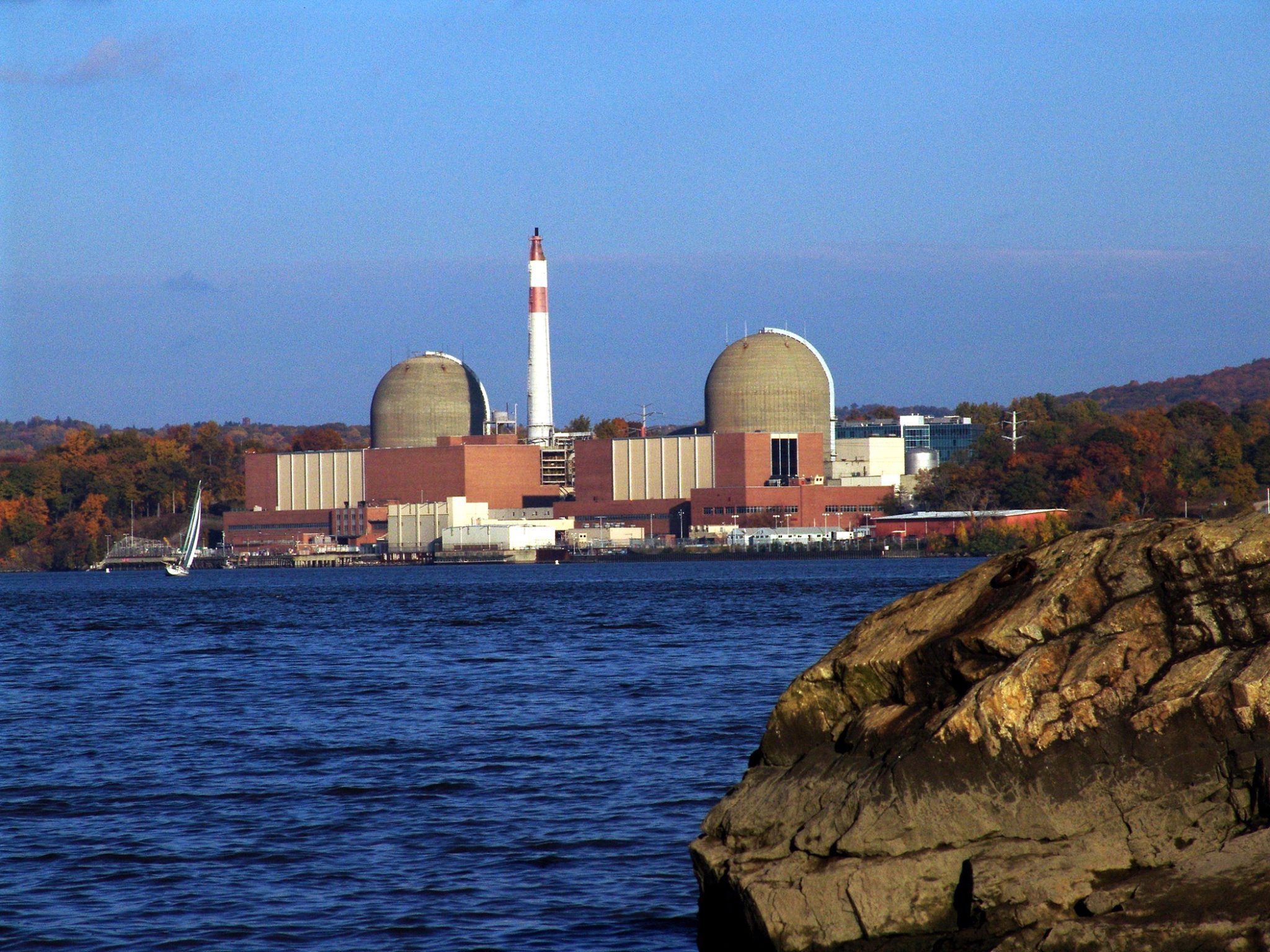
After the latest accident at the Indian Point nuclear reactors in Buchanan, N.Y. — the seventh major malfunction in just eight months — a coalition of six environmental and health organizations issued an urgent call to shut down the aging power plant while investigations by the U.S. Nuclear Regulatory Commission and New York State agencies are conducted.
On Feb. 6, it was reported that Indian Point recorded a significant spike in radioactive, tritium-contaminated water at several monitoring wells.
The coalition includes Riverkeeper, the Sierra Club Atlantic Chapter, Scenic Hudson, Hudson River Sloop Clearwater, Indian Point Sane Energy Coalition and Physicians for Social Responsibility.
Twenty million people live in Indian Point’s evacuation zone — within 50 miles of the power plant. New York City’s northern border is just 24 miles from Indian Point. The danger zone also extends to parts of New Jersey and even as far as Long Island.
Governor Andrew Cuomo and lawmakers across the Hudson Valley are also on record saying that the failing facility poses too great a danger and must be taken offline.
However, U.S. Senator Chuck Schumer promptly rebutted the coalition’s demand to close the plant, countering that Indian Point provides 25 percent of the Downstate area’s power, and that there is currently no way to replace that energy. Plus, he said, closing the accident-plagued plant would boost electricity rates 30 to 40 percent.
“I have told some of the environmental people, if you can show me a plan to figure out a way to replace that electricity, fine. … In the meantime, I have emphasized very strong safety,” Schumer said.
But the senator’s response simply doesn’t hold water, according to the advocates urging the plant’s shutdown. In fact, Schumer is “dead wrong,” said Cliff Weathers, a spokesperson for Riverkeeper.
In short, Riverkeeper has been working with a consulting company, Synapse, that has focused on this issue for the past four years — namely, how to replace Indian Point’s capacity once it is shut down. Basically, the capacity of Indian Point’s two remaining reactors is 2,040 megawatts.
Meanwhile, three power plants that have been offline since Superstorm Sandy — Astoria, Bowline and Danskammer — and that all operate on natural gas, are coming back online, set to produce a combined total of 1,047 megawatts of power. New transmission projects Upstate will cut another 400 megawatts. Refrigerators and air-conditioning units are becoming more efficient, further decreasing energy need. Con Edison also has been ordered to create more efficiencies, which will cut up to 142 megawatts. The Downstate region is on track in 2016 to reduce peak energy demand by 549 megawatts, according to the study.
And, of course, renewable energy keeps growing — as it should and must — with more solar, wind and hydroelectric power, further reducing our dependency on fossil fuels and nuclear power.
When all these new power sources and efficiencies are added up, they total 2,100 megawatts — which is actually 60 megawatts greater than the current capacity of the dangerous nuke plant frighteningly located right in our backyard.
Schumer — though he publicly claims he wants to see the environmentalists’ plan — so far has not responded to Riverkeeper’s numerous requests to sit down and discuss these energy efficiencies that would make Indian Point’s power irrelevant.
Indian Point was built 42 years ago by Con Ed and is now owned by Entergy. The plant’s aging infrastructure is constantly being patched up. Heck, most people, though, get a new car when it starts to break down after seven or eight years. It’s a no-brainer that anything mechanical is more likely to wear out over time — and in the case of a nuclear plant, when something goes wrong, it could be an environmental disaster. Entergy counters that $1 billion in repairs have been put into Indian Point over the years — that’s a whole lot of band-aids and spit holding together a ticking time bomb.
One of the plant’s original three reactors was shut down years ago due to leaks. Indian Point’s two remaining generators are currently operating without a license while the N.R.C. decides whether to renew them. The feds ultimately make the call on whether to shut down nuclear plants. In addition, Indian Point is currently operating under a grandfathered coastal consistency certificate — which concerns the plant’s impact on surrounding waterways — but this is being challenged in court.
East Village journalist Paul DeRienzo, who has recently been chronicling the “leaks of the week” at Indian Point for The Villager, put things in perspective:
“No nuclear plants have been built since Three Mile Island. Demand for electricity is being met by natural gas fracking in this era. Nuclear is pure profit.
Catastrophic insurance costs are covered by the government. I’m told Entergy is among the worst companies, with a long history of mismanagement at Indian Point.”
Yes, nuclear plants were built near large population centers to cut down on transmission costs. But in the current era, as the Synapse study clearly shows, there is no longer a need for Indian Point — and it is simply incredibly risky to keep this broken-down, accident-prone, dangerously sited plant operating.
It’s time to start moving toward pulling the plug on Indian Point, and the sooner the better for all of us. And Senator Schumer, Riverkeeper is ready and waiting to show you the Synapse plan. You said you wanted to see one, right? We sincerely hope you’ll sit down with them soon and seriously consider what they have to say. The safety of 20 million people is at stake.

















